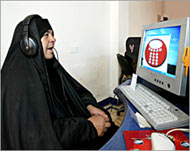Arab Human Development Reports
While many of the calls for reform and democracy in the Middle East in recent years seem to have come from outside the region, Arabs have debated the lack of, or slow progress of, development in their countries for decades.

Significantly, in 2000, the United Nations Development Programme (UNDP), which had for the past 10 years been producing human-development reports and indexes (HDIs) to determine quality of life levels, decided to focus for the first time on a specific region.
The HDI, which gauges performance by life expectancy, school enrolment and adult literacy records as well as by income per head, sought to examine the Arab world’s strengths and weaknesses.
A panel of Arab experts (from within and outside the Middle East) was set up by Dr Rima Khalaf Hunaidi, a former minister of planning in Jordan and now Arab affairs director at UNDP.
It was headed by Nadir Firgany, an Egyptian sociologist, as chief author.
Findings
A year later the Arab Human Development Report 2002 was published sparking debate across much of the region and beyond.
 |
|
Lack of knowledge is highlighted |
It remains the most significant pan-Arab index on quality of life to date.
The Arab survey, intended as an annual affair, began with an overview of the region and was followed up by a narrower report, the Arab Human Development Report 2003, pinpointing specific themes and focusing on the widening knowledge gap in the Middle East.
“What has gone wrong in the Arab world? Why is it in such a state of arrested development and seemingly unable to advance human liberty and quality of life?” asked Firgany at the London press conference inaugurating the first report, which was initially released in Cairo.
For a region richly blessed with one of the world’s most valuable commodities, oil, and with its people heirs to a rich cultural, religious and linguistic heritage, what had failed them on the road to progress and human development?
Growth
Taking the Arab world to mean the 22 members of the Arab League, accounting for roughly 280 million people, (similar in size to the US) the report states:
– The Middle East has the largest proportion of young people in the world, 38% of Arabs are under 14. It calculated that the population may top 400 million by 2020.
|
The Middle East has the largest proportion of young people in the world |
– Life expectancy had increased by 15 years over the past 30 years, and infant mortality had dropped by two-thirds.
– Arab income per head is higher than in most other developing regions (though its total gross domestic product, GDP, at $531 billion, is less than Spain’s).
– The Arab region has less abject poverty (defined as an income of less than $1 a day) than any other developing region, which is in part a tribute to the Arab and Islamic traditions of giving charity to the destitute. However, the report stated that the region is richer than it is developed.
Deficit
The report went on to explore the shortage of three essentials. The authors state that lack of freedom, knowledge and women’s rights hold the Arabs back from greater development and from reaching their full potential in comparison to more advanced nations.
“This freedom deficit undermines human development and is one of the most painful manifestations of lagging political development,” the report says.
|
The global wave of democracy has barely reached the Arab states |
In many Arab countries, poverty and illiteracy have reached staggering levels; health care has deteriorated significantly in some countries; human rights abuses are widespread; jails swarm with “prisoners of conscience”; freedom of expression is confined to empty promises; when positive change takes place, it is slow and insufficient.
The report concludes that “the global wave of democracy has barely reached the Arab states”.
Land and faith
The authors avoid making the Arab-Israeli conflict either a cause of, or an excuse for, the region’s failings.
However, the report contains references to the circumstances of the Palestinians living under occupation or as refugees, and its overview contains a section that refers to the paralysis of political and economic life across the Arab world due to the conflict.
On another delicate topic, the role of Islam in Arab human development, the report presents two views; the first affirming Islam as championing justice, peace, tolerance and all good things in society.
The second claims that previous reaches into Islamism, either by governments (carefully avoiding names) or societies, had so far created counter-productive consequences between inflexible and stifling authority and disempowered publics.